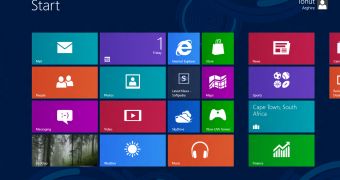Following Windows 8’s RTM milestone, the final code of the platform has leaked online, and some of the latest changes that Microsoft has brought to it have been revealed.
Among them, there is the fact that users won’t be able to set their Windows 8 computers to boot straight to the desktop.
Basically, users will not be able to circumvent the start menu in Windows 8, some of those who played with the leaked build report, a recent article from ZDNet’s Mary Jo Foley unveils.
In the pre-release flavors of the operating system, including Windows 8 Release Preview, users had the possibility to create a shortcut that would switch to the Desktop immediately.
Moreover, they had the possibility to set the shortcut to be automatically activated after logging into Windows, which would circumvent the tiled Start screen.
Given the fact that this feature was present in previous flavors of Windows 8, some users were hoping that Microsoft would at least allow administrators to use Group Policy to boot straight into the desktop, but it appears that this might not be the case.
Of course, Microsoft will still allow users to easily switch to the Desktop through various keyboard shortcuts, but that won’t eliminate the fact that they will be brought to the Start screen first after logging in.
Said article also points out that business users don’t agree with the Start screen either, especially when it comes to devices that do not feature touch capabilities.
While the Windows 8 Start screen will still be there (we still don’t know how it will be called, since Microsoft is moving away from the Metro term), users will be able to bring back the classic Start Menu on their PCs courtesy of third-party software, it seems.
Microsoft was expected to block such applications starting with the Release Preview, or in the RTM flavor, but it appears that it didn’t.
The new Windows 8 UI looks highly appealing to some, although many people don’t like it, yet it might easily prove a hassle for businesses who will have to spend both time and money to retrain their employees, a TechRepublic IT survey explains.

 14 DAY TRIAL //
14 DAY TRIAL //